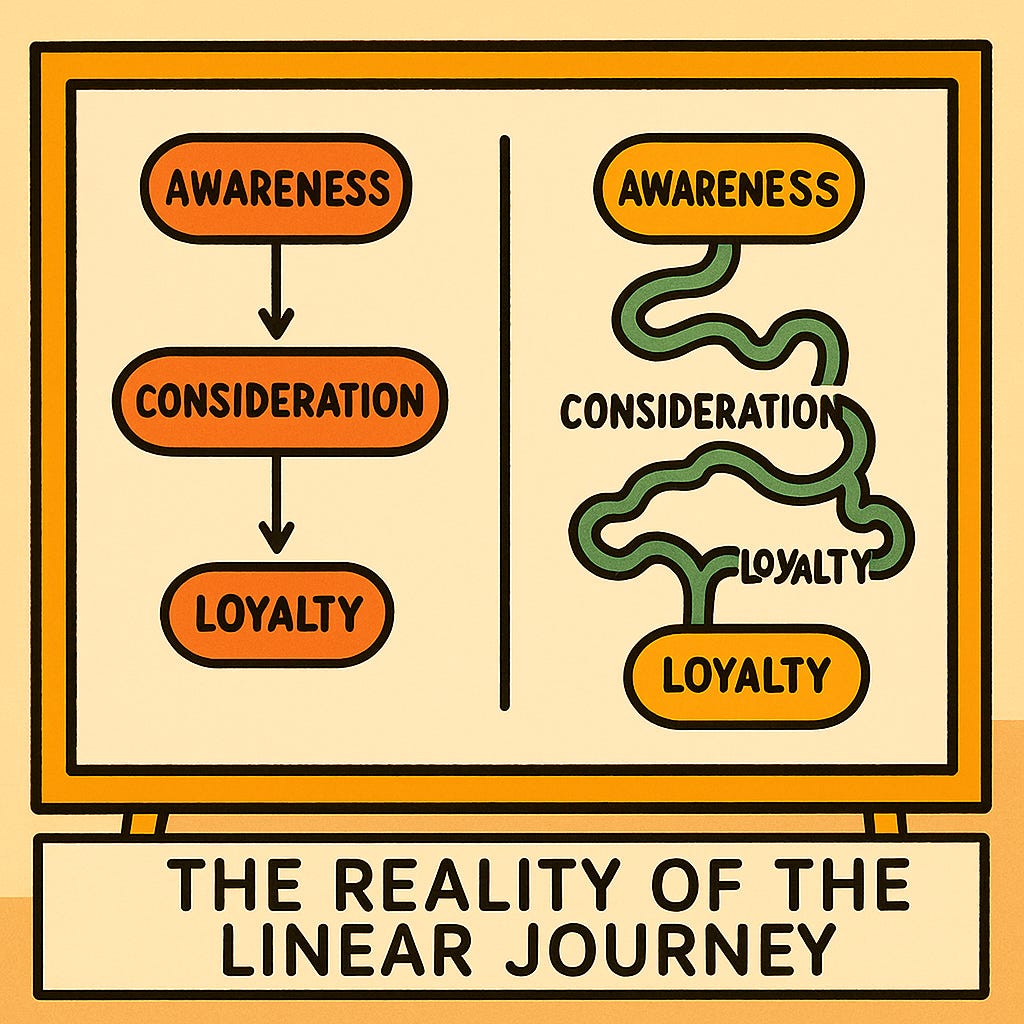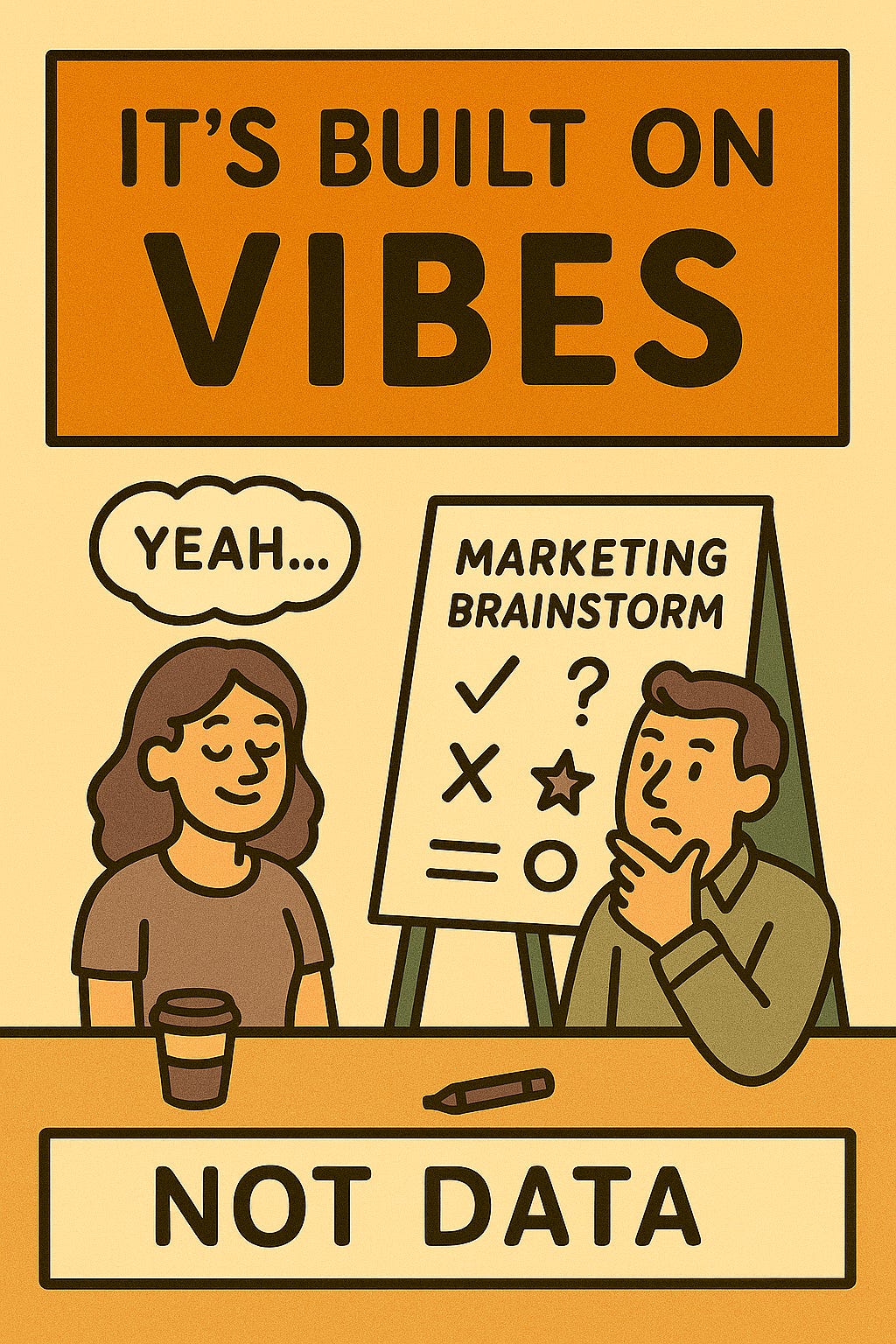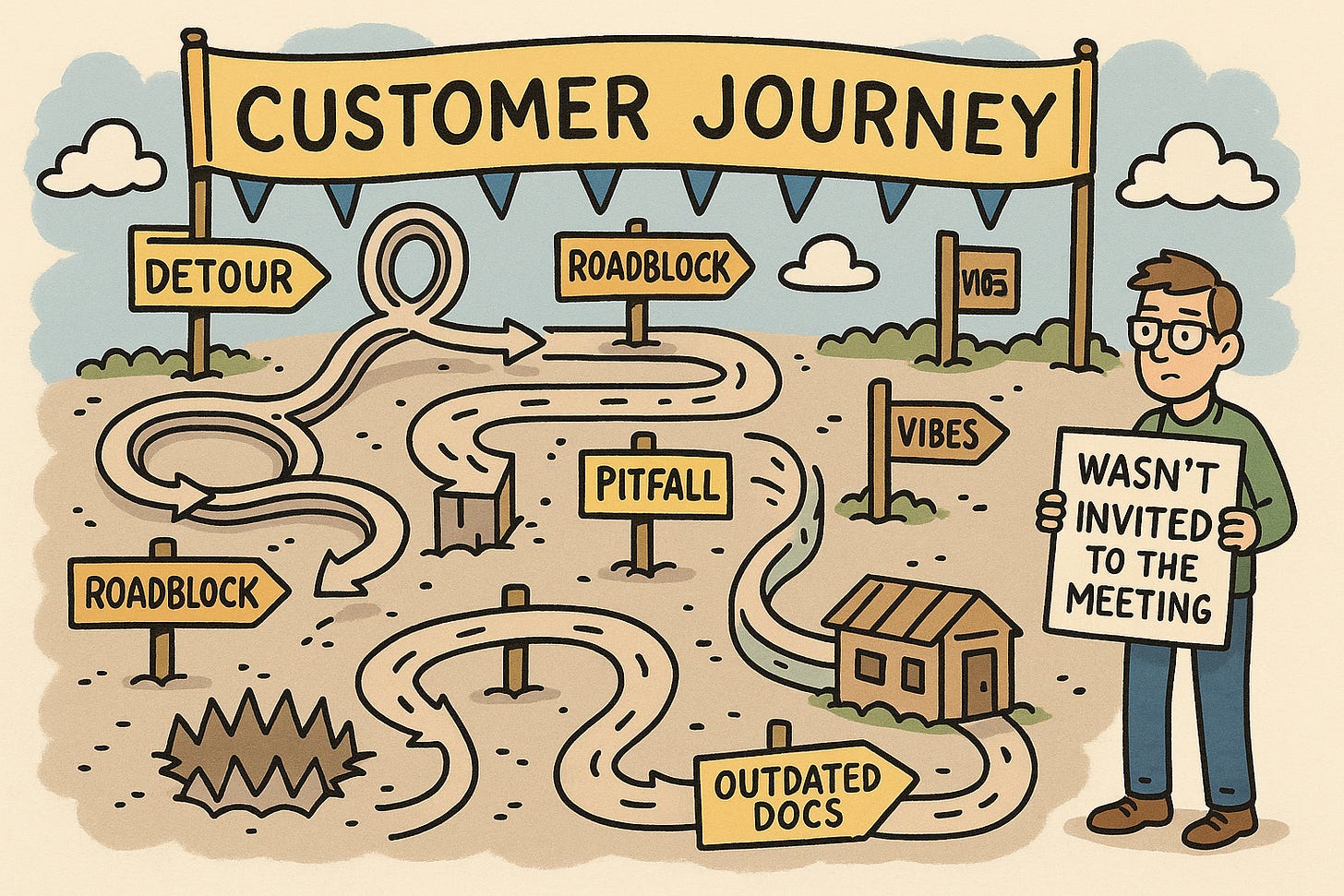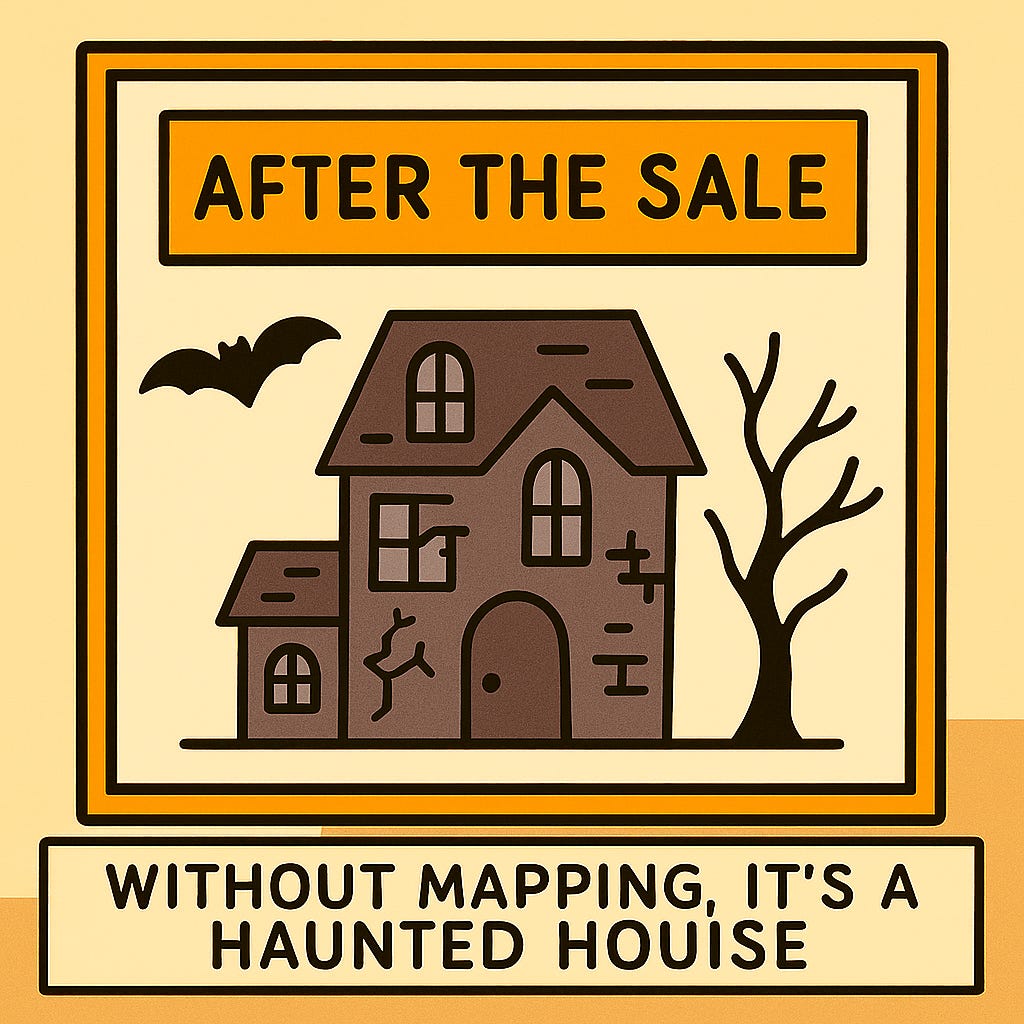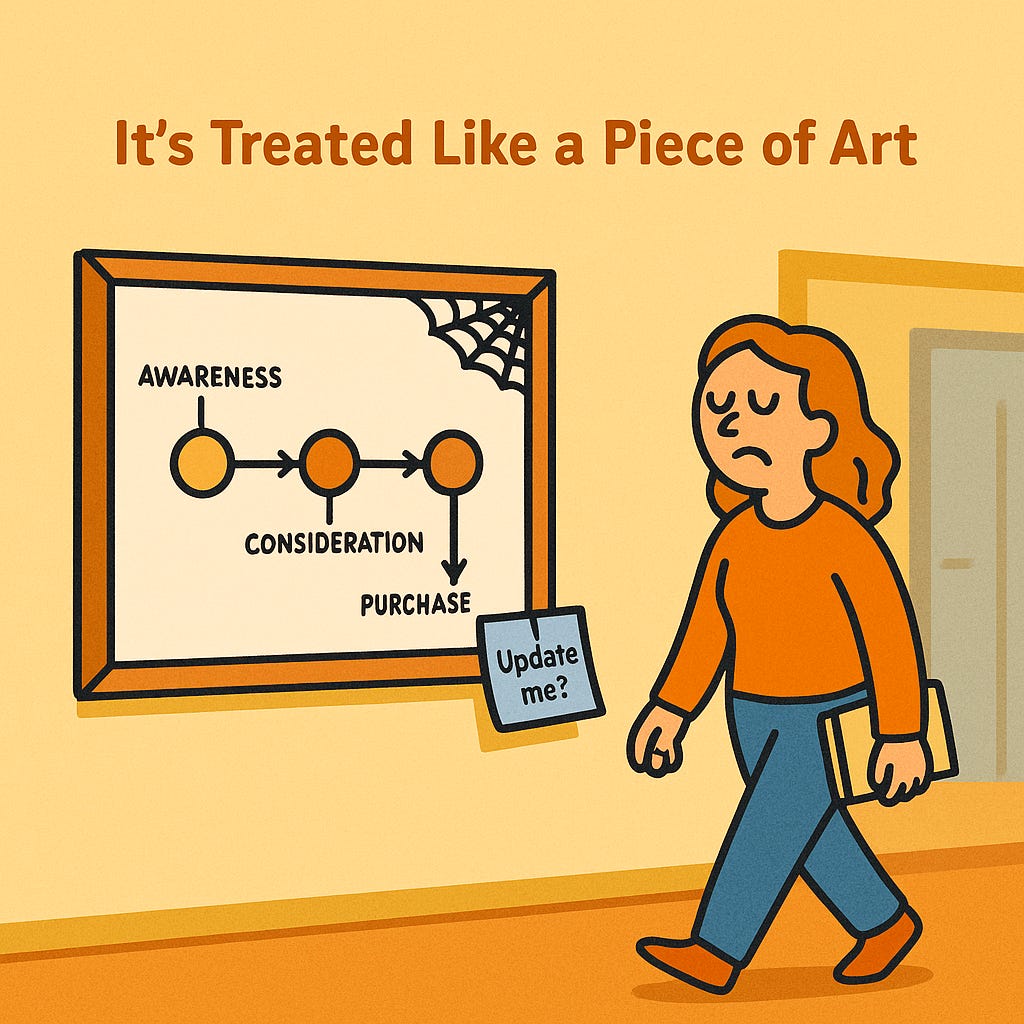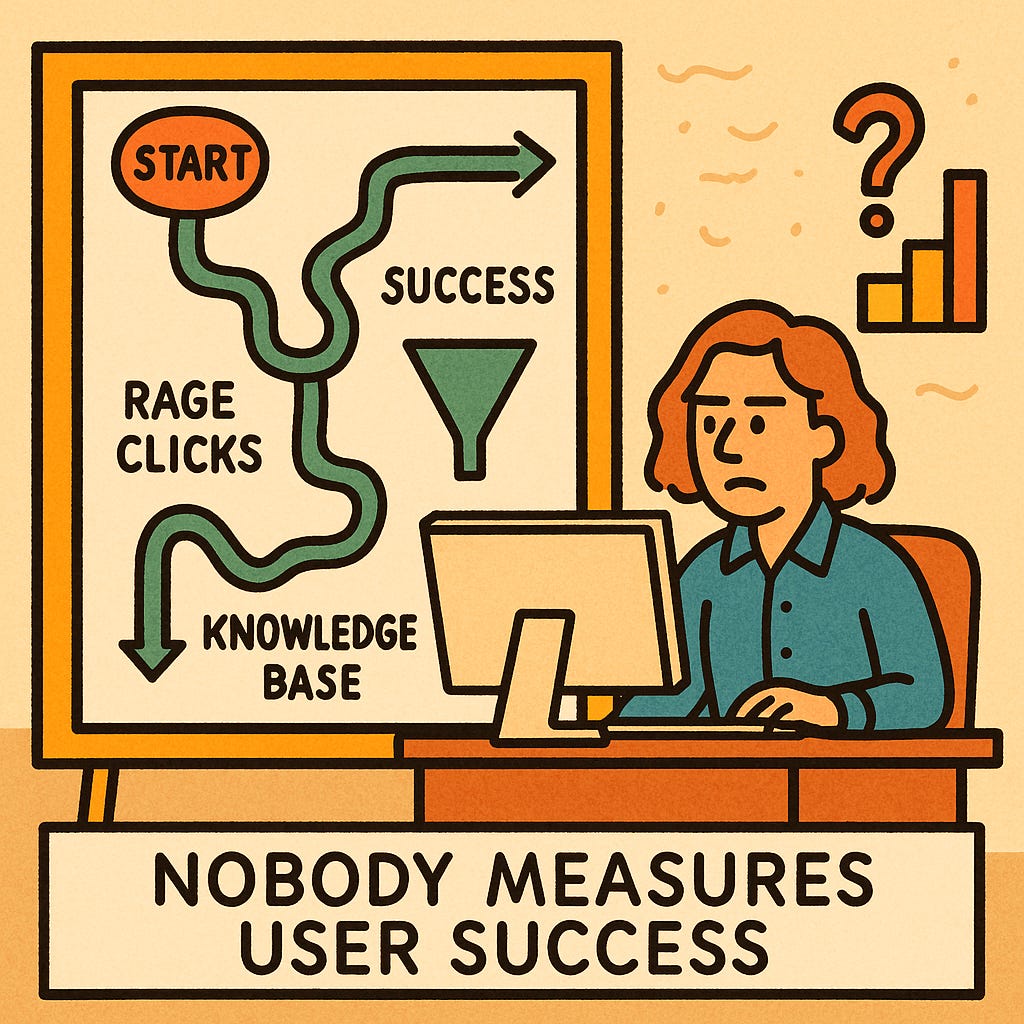Why Your Customer Journey Map Might Be Leading You Straight Into a Ditch
Customer journey maps look great in theory—until they derail like a caffeine-fueled raccoon drew them. Here's what goes wrong (and how content folks can fix it).
I once tried mapping out my career journey on a whiteboard. It started strong—college, first job, some light existential dread—but by the third marker color, it devolved into something resembling a subway map drawn by a raccoon with a Red Bull problem.
That, my friends, is how most customer journey maps end up: overly optimistic at first, then quickly unraveling into chaos and assumptions.
And yet, if you're a technical writer, someone probably waved a journey map in front of you at some point and said, "This is where your content fits in." It's like summing up your entire contribution to the customer experience in a tidy box labeled "Post-Purchase Onboarding PDF."
So, let's discuss how customer journey mapping can go wrong, especially when tech writers are not invited to the meeting until it's too late.
1. The Fantasy of the Linear Journey
You've seen that clean diagram in which a customer starts at awareness, gently floats through the consideration phase, gracefully landing at loyalty like a well-trained swan.
Reality check: people don't shop like they're on a conveyor belt at IKEA.
They loop, backtrack, get distracted by shiny objects, and rage-quit halfway through. If you don't account for detours, you plan your customer journey like a road trip using a 1984 Rand McNally atlas—without GPS or a clue.
2. It's Built on Vibes, Not Data
Some journey maps are less "customer insights" and more "vague recollections from a marketing brainstorm fueled by muffins."
If your map reflects what you think customers do instead of what they actually do, congratulations—you've created a piece of customer fiction.
Technical writers, you deserve better. Ask for real data: search queries, support tickets, behavioral heatmaps. Bonus points if someone on the team has spoken to a customer during the past decade.
3. Everyone Is One Dimensional
"Meet Sarah. She's a project manager who loves yoga and needs scalable documentation tools."
Cute. But also, no. 🙈
People don't exist as frozen archetypes. They're multitasking (okay, not really — but many believe they are), context-switching, sometimes grumpy beings whose needs change hourly. One minute, Sarah's researching your product; the next, she's trying to figure out why your documentation refers to three different UI labels for the same feature.
Don't write for cardboard personas. Write for people who are busy, tired, and want to know where the hell the settings panel moved to.
4. No Writers in the Room
Well-intentioned teams create a lot of journey maps in workshop sessions filled with sticky notes, lattes, and absolutely no content people.
That's a mistake. A huge one.
Writers (and, by extension, customer support staff) know what users ask, where they get stuck, and how often they type "how to turn it off and back on again." Their absence from the mapping table means the voice of reason—and readability—is missing.
And guess who gets blamed when the help content doesn't magically solve everything?
5. It Ends at the Sale
Oh good, we've sold them the thing! Let's pack up and move on. Surely they'll never need help again.
Except… they will.
And if you don't map what happens after the sale—onboarding, troubleshooting, renewal—you're just designing a haunted house with no exits.
Don't let support content be an afterthought. That's your moment to shine.
6. It's Treated Like a Piece of Art
Some journey maps get framed. Literally. In hallways.
And then they're never updated again.
A journey map should be a living, breathing, occasionally grumpy document that changes when your product does. If yours still references that chatbot you retired in 2022, it's time for a refresh.
7. Nobody Measures If It Works
Is the journey getting better? Are users actually succeeding? Or are they rage-clicking through your knowledge base like it owes them money?
If you're not tracking outcomes—or worse, can't track them because the content lives in twelve different tools with no analytics—your map is more aspiration than guidance.
Final Thought (Before You Add Another Sticky Note)
If customer journey maps are going to be useful, they have to be honest. Messy. Real.
Most importantly, they have to include content that actually helps customers succeed. That's where you come in, dear technical writer.
Remember the journey is complex, but your contribution doesn't have to be an afterthought. You're not just writing documentation. You're plotting the breadcrumbs that help customers find their way out of the dark forest. Preferably without screaming. 🤠


